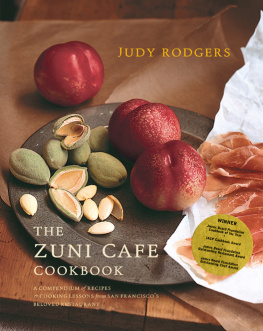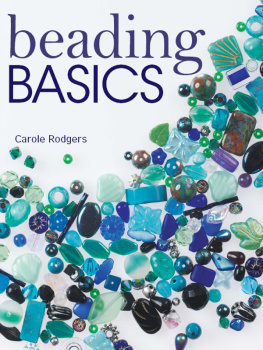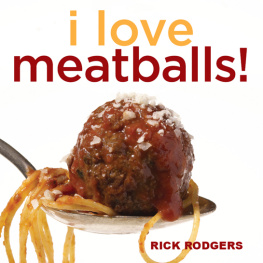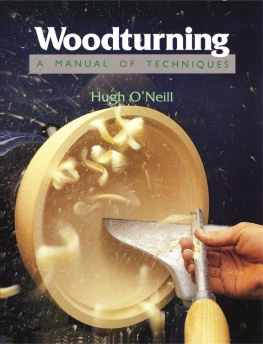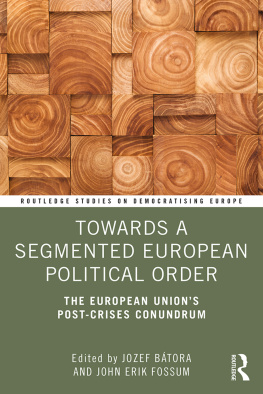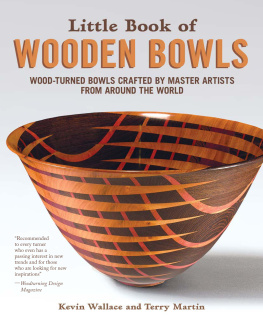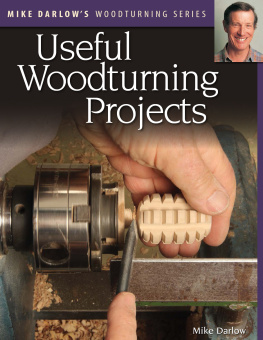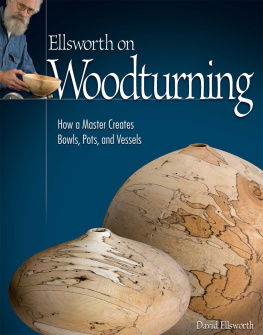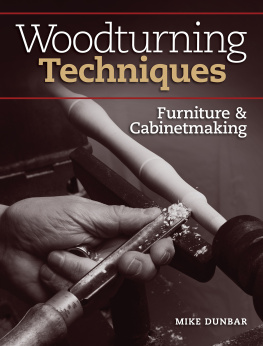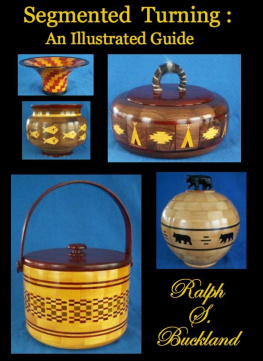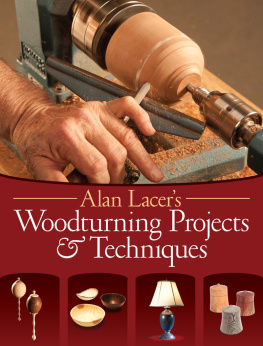The Fundamentals of
Segmented Woodturning
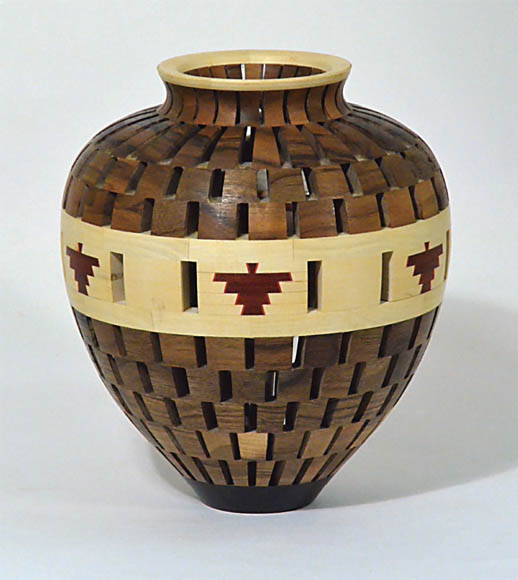
The Fundamentals of
Segmented Woodturning
Projects, Techniques & Innovations
for Todays Woodturner
James Rodgers

The Fundamentals of Segmented Woodturning
Projects, Techniques & Innovations for Todays Woodturner
by
James Rodgers
All rights reserved. No part of this book may be reproduced or transmitted in any form or by any means, electronic or mechanical, including photocopying, recording, or by an information storage and retrieval system, without written permission from the publisher.
James Rodgers 2016
Cover design by Jim Goold
Interior design and layout by Maura J. Zimmer
ISBN: 978-1-610352-78-9
135798642
Linden Publishing titles may be purchased in quantity at special discounts for educational, business, or promotional use. To inquire about discount pricing, please refer to the contact information below. For permission to use any portion of this book for academic purposes, please contact the Copyright Clearance Center at www.copyright.com
Printed in the United States of America
Cataloging in Publication data on file with the Library of Congress
Linden Publishing, Inc.
2006 S. Mary
Fresno, CA 93721
www.lindenpub.com
Acknowledgements
In creating this book I have had help from several sources without which I could not have done the project:
First my proof reader without whom the publisher would have had an impossible task, Sharon Rodgers, my wife.
Ron Kersey taught me how to use SketchUp for my last book and helped solve several technical drawing problems in this book; we both learned even more.
Jerry Jakubowski, a friend and former student, read, critiqued, and offered substantive recommendations in formatting and presentation.
Lastly to all my current and former students in the classroom and on line for their help in clarifying processes and their encouragement to undertake this work.
Thanks to all.
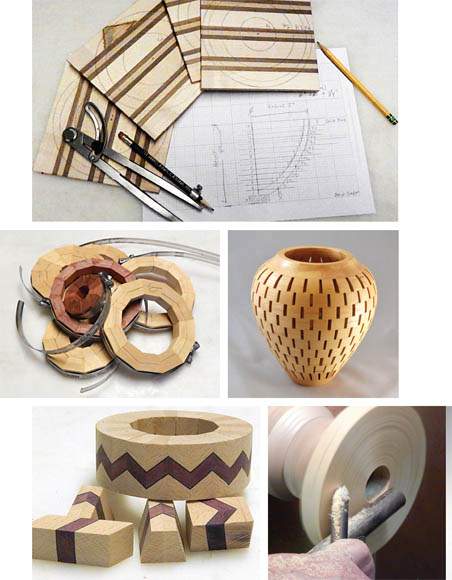
Contents

Preface
Drawings
In the book the author has used drawings of half bowls and vessels to illustrate the measurements and calculations. Many turners prefer to make half form drawings as it is easier. The calculations are exactly the same whether you work from diameter or radii.
Measurements
Measurements are in fractional inches, the most commonly used measurement system in the United States and woodturning in particular. Unfortunately, the process of converting fractions to decimal inches, multiplying by another decimal (usually or 3.14) then estimating the conversion back to fractions is tedious. The simplest measurement system to use is the metric system where no conversions are required and division of a measurement is straight forward. I encourage you to consider conversion to metric.

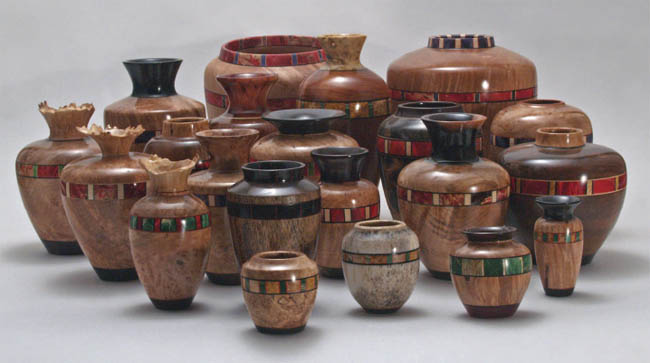
All commercial software used in segmented turning can be set to fractional inches, decimal inches, or metric measurements. When building your fixtures consider adding measuring tapes with metric measurements.
Theory and Practice
Each chapter consists of two parts: the explanation of the concept and an example to make in practice. The author has used graphics in the initial theory, and assembly pictures in the second section to further aid in clarity.
Information on specific accessories and fixture construction plans can be found at the web sites referenced in the .
Cautions: Remember that woodturning can be dangerous if safety precautions are not observed including wearing eye and face protection, keeping your tools sharp and following all manufacturers safety precautions. The techniques and power tools usage presented in this book are the ones most used by the author over many years of teaching segmentation techniques and which he finds the easiest to initially assimilate.
Introduction
The emphasis on segmentation has grown, expanding in new directions and adding new processes. This book gives the new segmenter a simple introduction, new avenues to explore, and techniques to try. The approach of this book is intended to be more visual than written where possible.
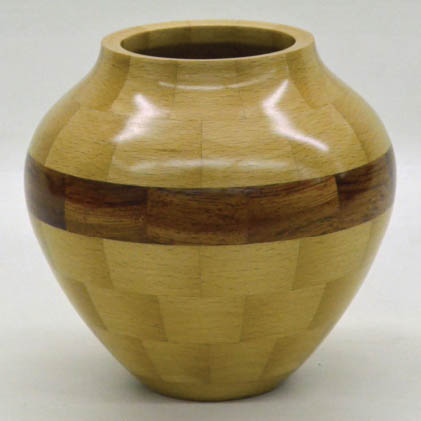
Ring segmented vessel
Why Segmented Woodturning?
With segmented techniques many unique vessels can be created by selection of wood, design and assembly techniques. The choices in designs are limitless. You can find a great board at the local woodworking dealer and know that you can make a bowl or vessel without spending a small fortune for the materials. You use standard woodworking techniques to create cuts with precision and woodturning techniques to complete your projects.
What is Segmented Woodturning?
Segmented wood turning is the process of building from flat stock by cutting, arranging and gluing interesting woods into more complex, and beautiful projects.
Ring segmented turning is the process of building segmented rings, stacking them into bowls or vessels, and turning the shape by traditional methods. By choosing wood species of various colors and textures elaborate designs can be developed and woven into the fabric of the vessel.
Open segment turning requires space between the individual segments. Indexing is required to get the proper spacing between the segments. This technique requires less precise cutting but more care in the assembly of the project.
Bowls from a board assemblies start with a laminated, multicolored board. They are then sliced into rings, stacked, rotated and turned. The beauty is in the apparent complexity. While the assembly is not complicated more attention is given to designing and planning of the project.
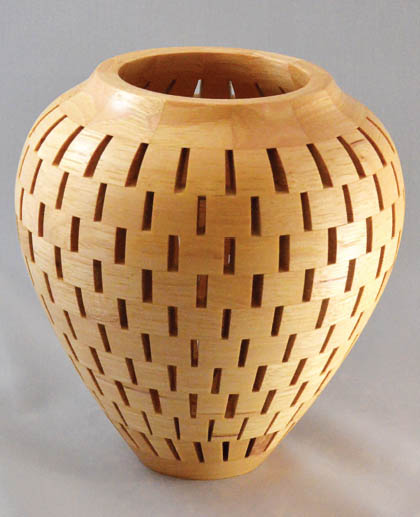
Open segment vessel
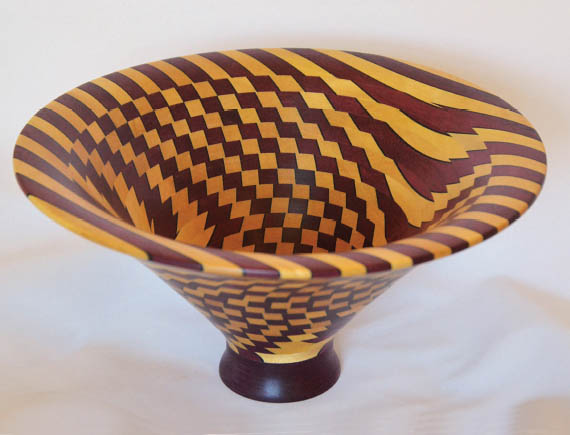
Bowl from a board

Stave segmented vessel
Stave segmented turning is dealing with very tall segmented rings or staves. The tall stave segments can be cut the length of the planned project or at compound angles to reduce material usage. This technique will not be covered in this book.
Next page

